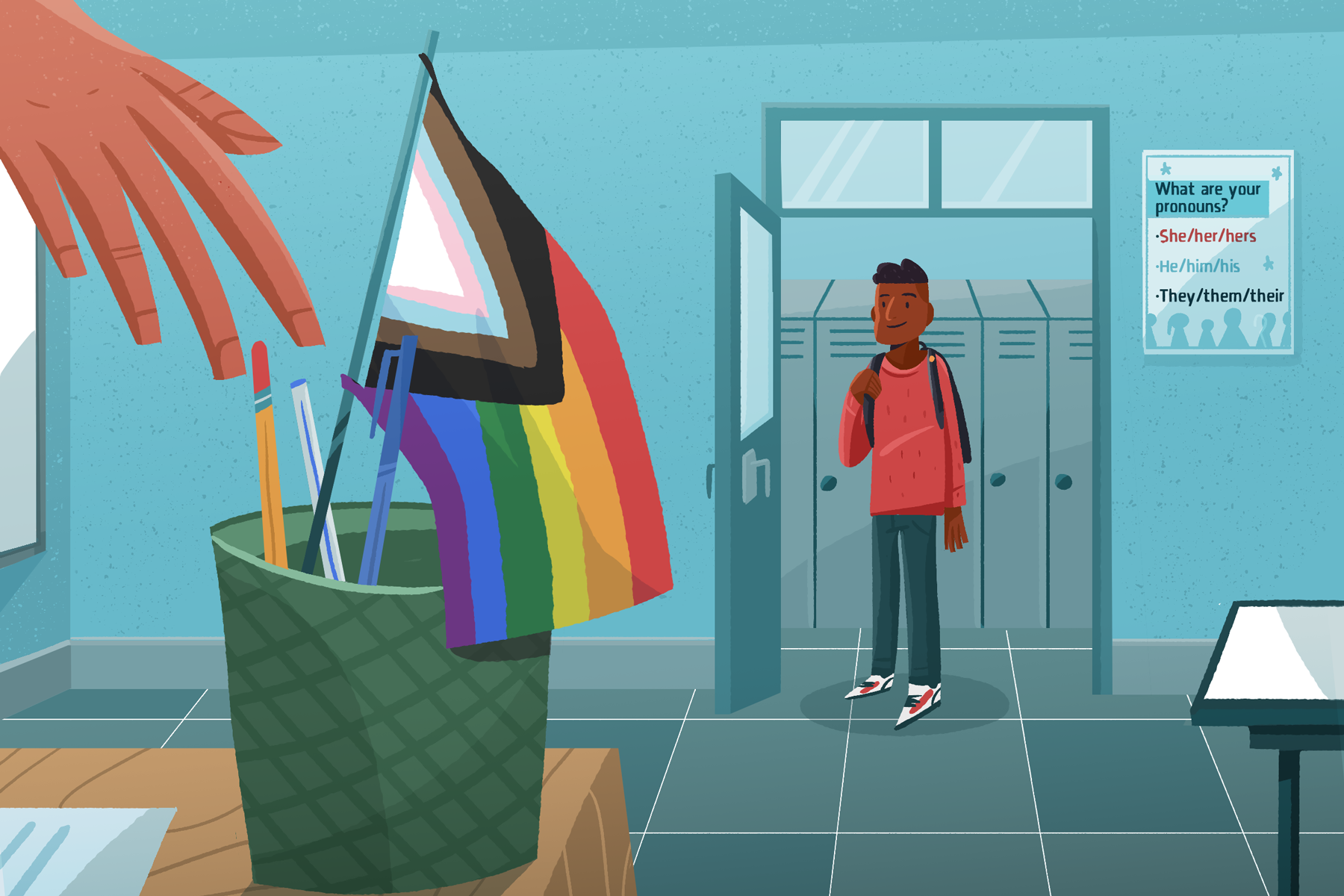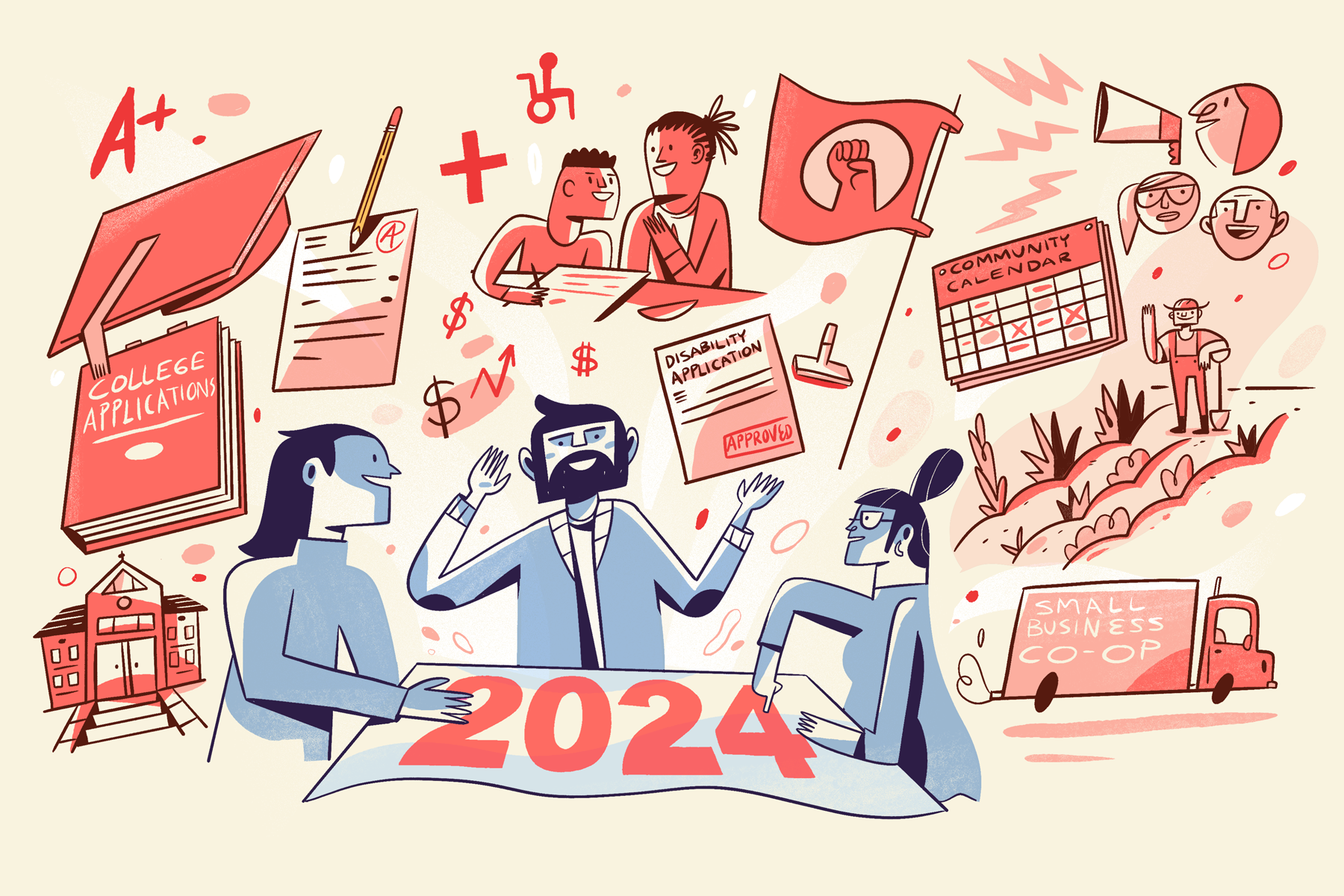
One Simple Question: The Importance of LGBTQ+ Inclusivity in Education
In the United States, each of us lives two simultaneous realities – one in which the Golden Age of television brings us the most diverse, representative casts we have ever seen, while, at the same time, nine unelected federal officials draft court decisions that lay out a clear path for the repeal of the civil liberties that are an unspoken given in those same shows.
As someone who grew up in 90’s and early 2000’s, I can’t help but burn with envy at the representation that young people get to grow up with as their guide, something that I craved deeply and was denied at their age. However, I then turn to the daily headlines and am greeted with a new round of legislators determined to undercut the progress that so many of us have been desperately waiting for. As part of the team of Friday, I find myself constantly inspired by my team’s ability to translate our political and community visions into tools that we can share with our clients, many of whom work directly with young children and students across the country. In this case, that tool was the Highlight Conditions Gap survey.
Even though students across the country participate annually in standardized state testing and other programming that includes an identity survey, this data is rarely collected alongside a survey that allows students to play an active role in how their school evolves and improves itself for future learners. At Friday, we developed Highlight because we believe in the value of student feedback and understand that students who are able to bring their whole selves to the classroom everyday grow up to be happier, more fulfilled human beings. As strategists, our main goal was to fill a crucial information gap – do our students feel represented and enriched by their school and its leadership? While this could seem like a minor change in school administration, the Highlight survey is possibly the only student experience survey inclusive of this simple question: Do you identify as LGBTQ+?
In the last year, we decided to revisit our survey’s design and include this question for all surveys for High School students, with the option to extend to all grade levels. For many school administrators, this is the first time they’ve seen just how many of their students identify as LGBTQ+ – many of whom had no idea the community at their school was so large. This quantitative data collection also allows for a more meaningful investigation of student experience, which then can contribute to stronger school policies and curriculum. As one of Friday’s founding partners and our Strategic Planning lead, Annie Crangle works everyday with our educator clients, and often finds that school leadership is surprised and inspired by survey results. Crangle says many school leaders have told them that they’ve never seen data like this before, and now are better equipped to create communications and programming that’s fully inclusive of their student body. “That’s the definition of equity,” says Crangle. Most school administrators have also been pleased to find that students who identify as LGBTQ+ largely show strong survey results, often even reporting greater self-efficacy and hope for their future than their peers.
As Highlight survey administrator with Friday, I’ve had the opportunity to see firsthand the important impact inclusive education can have on students of all ages. Youth LGBTQ education is important because inclusive education is life changing and impactful, helping to create a strong foundation for self-understanding and community engagement. For teachers, this is the first time many are realizing the true diversity of their classrooms, and, for students, this is the first time many are being asked to contribute to administration decision-making, let alone consider the ways their own identities interact with their classroom experience. For some, it’s the first time they’ve been introduced to the concept of LGBTQ+ identity, for others, it’s a breath of fresh air – one of few school curriculum tools that is inclusive of their multifaceted identities and unique school experiences.

According to the Trevor Project 2022 National Survey on LGBTQ Youth Mental Health, “recent political attacks aimed at transgender and nonbinary youth have not only threatened their access to health care, support systems, and affirming spaces at school, they’ve also negatively impacted their mental health.” And now, parents and educators are faced with the challenge of trying to support and engage with young students while also navigating the aftermath of state-enforced erasure and homophobia.
“Simple” or “common sense” LGBTQ programming (rainbow flags, gay-straight-alliances or GSAs, inclusive curriculum, diverse teachers, trust in staff as a whole) might seem overly obvious, or perhaps insufficient, but can make all the difference in student experience. “The fact that very simple things — like support from family and friends, seeing LGBTQ representation in media, and having your gender expression and pronouns respected — can have such a positive impact on the mental health of an LGBTQ young person is inspiring, and it should command more attention in conversations around suicide prevention and public debates around LGBTQ inclusion,” says, Amit Paley, CEO of the Trevor Project. Plain and simple, seeing reflections of themselves and their community in their everyday school curriculum improves students’ hope for their future and development of personal identity. This can be achieved through many different ways, beginning with creating warm inclusive classrooms where students can bring their full curious selves to school everyday without fear of bullying or harassment.
Student surveys, alongside other student-centered programming, offer school administrators the opportunity to let their students lead the way towards a stronger curriculum and community. More than ever, students need to be able to feel safe in the classroom and out on the field with their teammates. With the creation of Highlight and its integration into our Strategic Planning advising services, the Friday team has worked to create a tool that would allow for teachers and other school leaders to create custom strategies for engaging with their ever-changing student body. This begins with inclusive staff, administrative practices and curriculum – things young students engage with on a daily basis. And, while this is just a first step in developing a more inclusive educational environment at their schools, it is perhaps the most important – the critical decision to embrace, and invest in, student-centered programming, knowing that the benefits will be incalculable and foundational for the next generation of diverse leadership.








